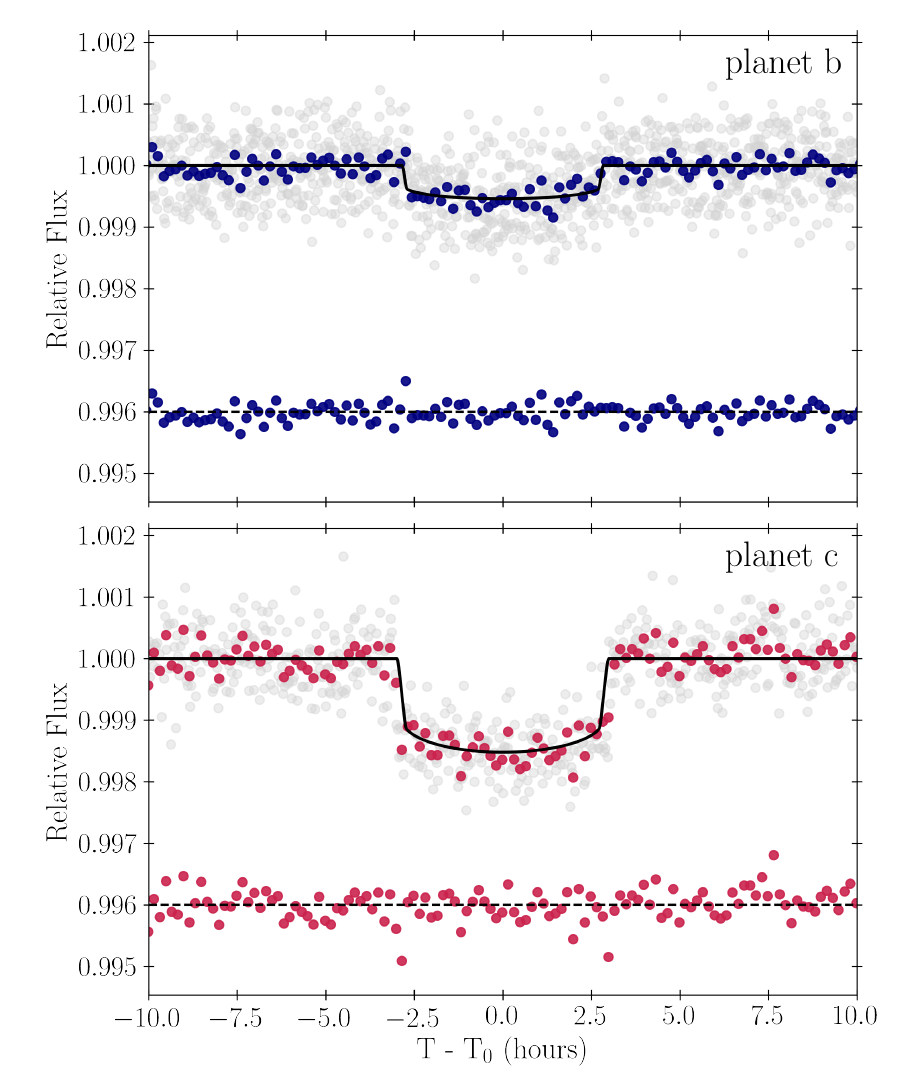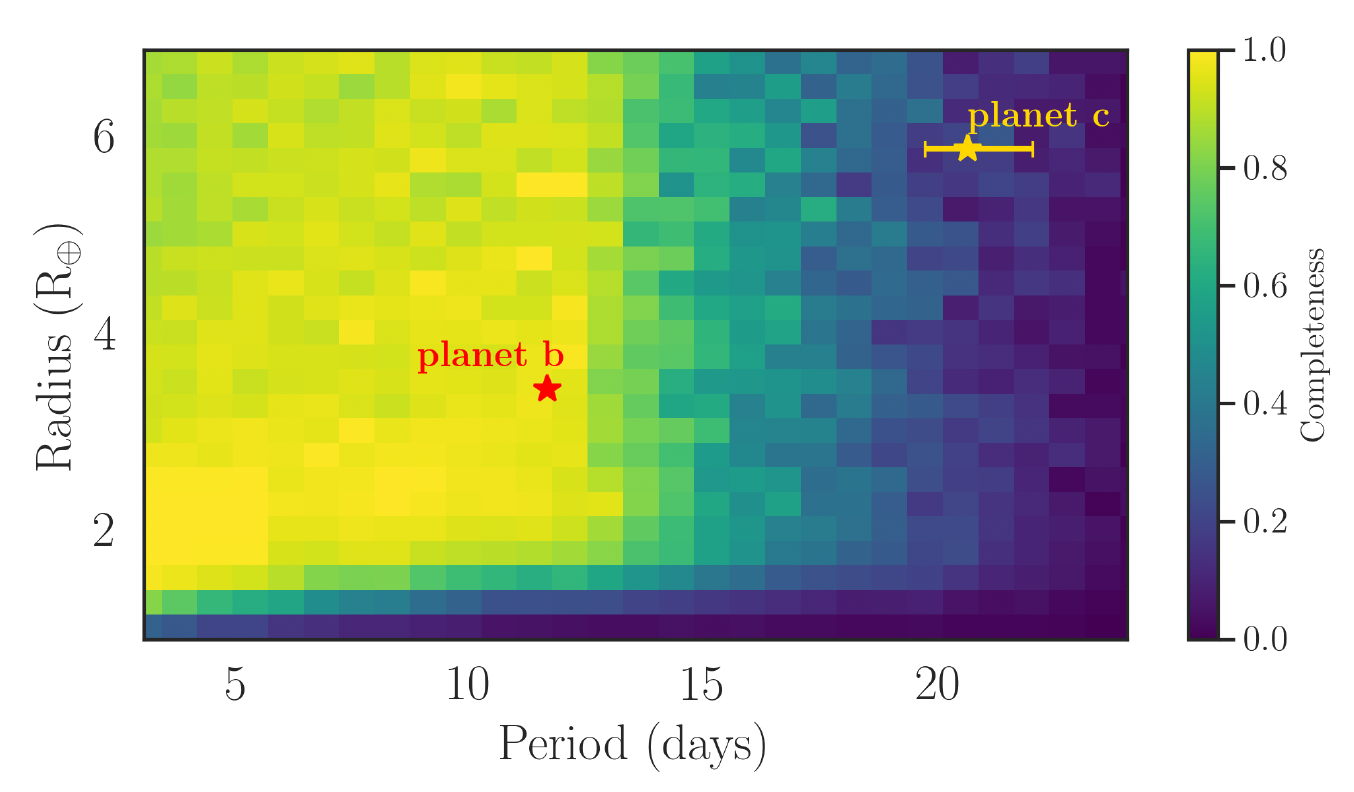data analysis:
old, long-period planet
Multi-planet system
Systems with multiple transiting planets offer a wealth of information for exoplanetary science. In particular they allow for comparative planetology: studying planets that have formed out of the same material, but which have formed and evolved in different environments, receiving different amounts of incident flux from the host star, resulting in differing masses, radii, and compositions. Well characterised multi-planet systems therefore provide important model constraints that single-planet systems cannot, providing insight into planetary system architecture and evolutionary pathways, as well as informing ongoing planet population studies.
With this work, we studied a system, known as HD 152843, that contains two planets (planet b and planet c) that are orbiting around a bright, Sun-like star.
Summary of analysis
detection of both planets with the help citizen science.
carried out numerous vetting tests to ensure that the signal is on target and not a false positive.
statistically validated the signals by showing that it is statistically unlikely for the signal to not be caused by a planet.
placed limits on any additional planets in the system (see below) .
obtained follow-up observations from the ground (radial velocities).
used a parametric model using MCMC that jointly fit the spectroscopic and photometric data in order to determine the system parameters.
determined the properties of the star (mass, age, radius etc) by fitting synthetic spectra to the stellar spectrum using a grid search.
calculated the prospect for observable transit timing variations in the future.
generated synthetic models of what the atmospheres of the planets could look like.
Additional planets?
Following the detection of planets b and c, I explored the possibility of additional transiting planets within the system. I did this by quantifying the detectability of additional planets in the TESS light curve using a transit injection and recovery test. I generated the injected signals using the open-source batman python package (Kreidberg, 2015), with planet radii ranging from 1 to 12 R⊕ and periods ranging from 3 to 24 days (approximately the duration of the sector), both sampled at random from a log-uniform distribution in order to over-sample the smaller planets that are more difficult to recover. I simulated and injected a total of 750 000 transit events. The BLS algorithm was then used to try to recover the injected signals, with a search that sampled a frequency grid that was evenly-spaced from 0.01 to 1 day−1. For each simulation, the period and orbital phase corresponding to the highest peak in the BLS periodogram were recorded. If the recovered orbital period and phase agreed to within 1% of the injected signal, the injection was deemed to be correctly identified.Overall, this analysis highlights the difficulties associated with detecting longer period planets using automated algorithms.
Planet formation and evolution
The two planets also stand out in terms of their bulk densities. Given the minimum radius and upper mass limit of HD152843 c, this planet has a density <0.66 g cm−3, while planet HD152843 b has a density of 1.44+/-0.43 g cm−3. This suggests that both planets have extended gaseous envelopes, making both planets prime candidates for atmospheric characterisation.
One possible explanation for the estimated low density of planet c is that it formed at a greater distance from the host star prior to migrating to its current orbit. This would have allowed the planet to accrete a significant H/He envelope, due to the colder and less dense gas present farther away from the host star. Planets that undergo this type of migration are often found to be the outer planets in MMR chains (Lee & Chiang, 2016).
Alternatively, the two planets could have formed in situ with their differing planet properties (i.e. mass and radius) resulting from subsequently diverging evolutionary pathways. For example, extreme ultraviolet irradiation from the host star could have triggered atmospheric loss through photoevaporation of the inner planet (Owen & Wu, 2016; Chen & Rogers, 2016), stripping it of its extended gaseous envelope, while the outer planet could have been inflated, resulting in the observed low density of planet c.
Theory also suggests that the low density of the planets could be due to tidal heating, which could result in an increase in entropy (e.g., Millholland, 2019) and thus an inflated radius. Finally, Wang & Dai (2019) and Gao & Zhang (2020) independently suggest that the apparent radii could be enhanced by photochemical hazes in the atmospheres, resulting in an underestimate of the densities of the planets. Future transmission spectra of planet c, for example at mid-infrared wavelengths where the atmosphere is less affected by hazes, would allow for differentiation between different formation scenarios and therefore provide useful constrain how these planets formed and evolved.



